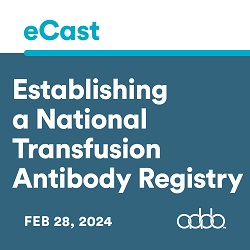

Product Code: 24EL-408-4035
Please note: This is a Single Viewer registration for one participant for the on-demand version of this program. Access instructions for the on-demand version of this program will be provided via email approximately 3-10 business days after the live program has occurred and the on-demand version is available. If registering after the on-demand version is available, immediate access is granted via the AABB Education Platform at https://education.aabb.org.
If you registered for the live program you do not need to register for this on-demand eCast (access to the on-demand eCast was included with the live program registration).
If you are interested in presenting this program to a group, please see the “eCast Registration Form– Group Viewing” form on the program page.
Program Description: Many blood bankers have been involved in or witnessed delayed hemolytic transfusion reactions during their careers. These reactions lead to increased morbidity and mortality, and can be preventable with accurate and up to date antibody records. As many patients receive care at different hospitals and hospital systems, many blood banks have an incomplete antibody profile of their patients. As the concentration of an alloantibody declines and becomes undetectable over a period of time, it is imperative that blood banks are aware of all antibodies being detected at other institutions. Currently, blood bank staff must call multiple blood banks and acquire the patient’s blood transfusion history over the telephone. At the receiving end, staff must be available to answer the phone, verify the patient identity and of the medical technologist, look up the patient’s information, and verbally communicate it over the phone. This telephone communication can be less secure, takes longer, and can be highly prone to errors. The creation of a national transfusion antibody registry will improve the speed, reliability, and patient safety in transfusion medicine. It will increase the accuracy of patients’ antibody records, decrease delayed hemolytic transfusion reactions, and promote safe blood transfusions.